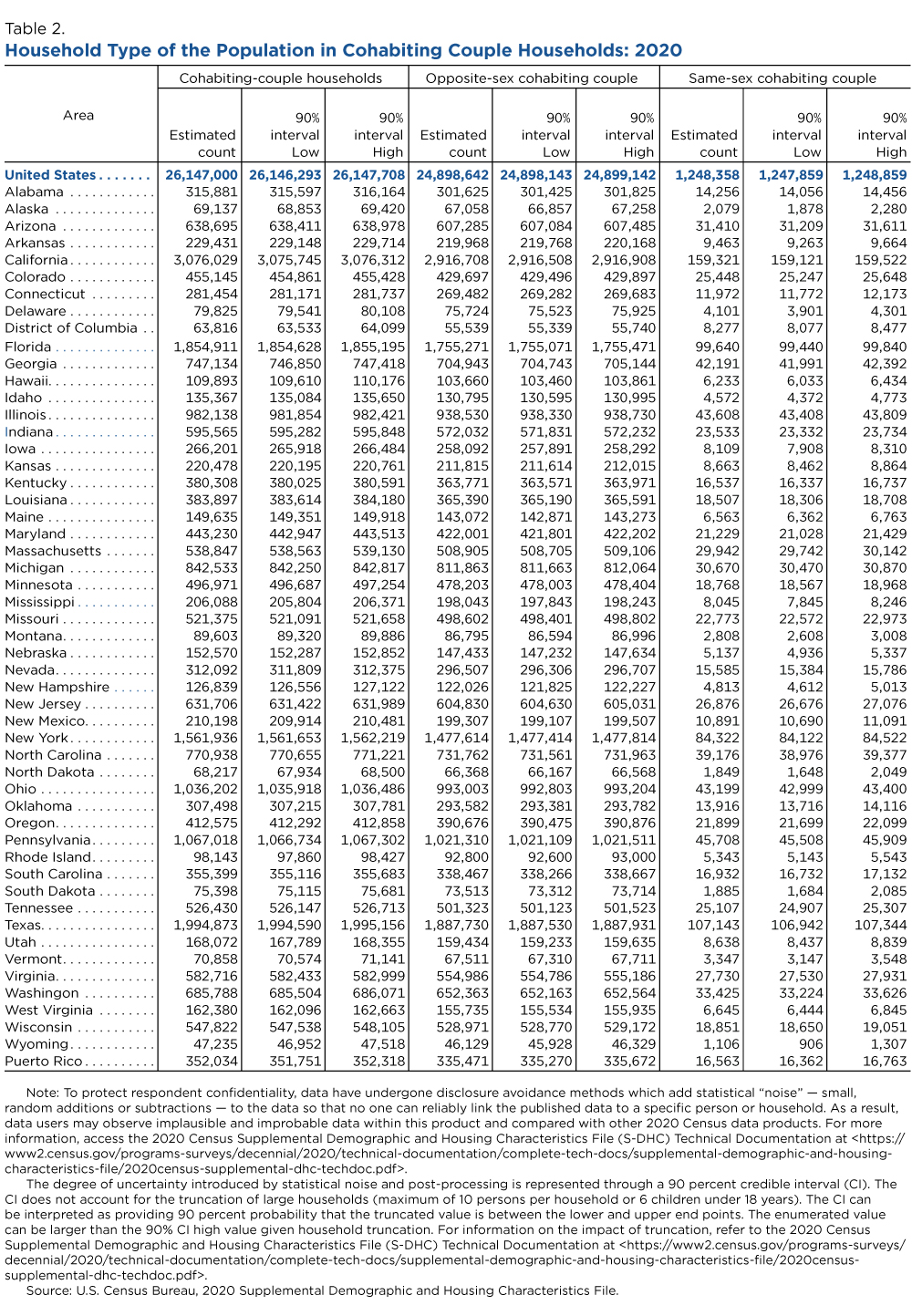About 3 Million People in Same-Sex Couple Households
September 24, 2024

Despite coupled households making up a decreasing share of U.S. households in recent decades, they still made up the majority: approximately 215 million people were living in coupled households in 2020, roughly 67% of the household population of 323 million.
Coupled households are those in which the householder has a spouse or cohabiting partner living with them. Each type of coupled households — married or cohabiting — may contain either an opposite-sex or same-sex couple.
Roughly 88% of those in coupled households lived in married-couple households (189 million). The majority (187 million or about 99%) were in opposite-sex married-couple households, and about 2 million were in same-sex married-couple households.
The 2020 Census Supplemental Demographic and Housing Characteristics File (S-DHC) released today shows that about 99% of people in coupled households (212 million) lived in opposite-sex couple households, while the remaining 1% lived in same-sex couple households.
Roughly 88% of those in coupled households lived in married-couple households (189 million). The majority (187 million or about 99%) were in opposite-sex married-couple households, and about 2 million were in same-sex married-couple households (Table 1).
About 8% of the household population (26 million) lived in cohabiting-couple households in 2020 (Table 2). Most (about 25 million or 95%) lived in opposite-sex cohabiting-couple households, and about 1 million were in same-sex households.
Coupled Households by State
The distribution of people living in the different kinds of coupled households vary across states.
- Married-couple households. There were about 189 million persons living in married couple households in 2020. States which had the highest number of persons living in these households were California (22.8 million), Texas (17.2 million), and Florida (11.9 million), while the states with the fewest number of persons in married couple households were Vermont (0.4 million), Wyoming (0.4 million), and the District of Columbia (0.2 million).
- Opposite-sex married-couple households. California had the highest number of people living in these households (22.6 million), followed by Texas (17.1 million) and Florida (11.7 million). States with the fewest people were Vermont (0.4 million), Wyoming (0.4 million), and the District of Columbia (217,000).
- Same-sex married-couple households. Reflecting their largest overall population sizes, the same three states had the highest number of people living in these households: California (290,000), Texas (161,000), and Florida (150,000). States with the fewest people living in these households diverged slightly from those with the fewest opposite-sex married-couple households: South Dakota (2,600), Wyoming (2,200), and North Dakota (2,100).
- Cohabiting-couple households. States with the highest number of people were the same as for married-couple households: California (3.1 million), Texas (2 million), and Florida (1.9 million). States with the fewest were Vermont (71,000), Alaska (69,000), North Dakota (68,000), the District of Columbia (64,000), and Wyoming (47,000).
- Opposite-sex cohabiting-couple households. The top states were California (2.9 million), Texas (1.9 million), and Florida (1.8 million). The states with the fewest people living in these households were Vermont (68,000), Alaska (67,000), North Dakota (66,000), the District of Columbia (56,000), and Wyoming (46,000).
- Same-sex cohabiting-couple households. The top states were, once again, California (159,000), Texas (107,000), and Florida (100,000). States with the fewest people living in these households were Alaska (2,100), South Dakota (1,900), North Dakota (1,800), and Wyoming (1,100).
The S-DHC provides counts of people living in households and average household size, by different characteristics (such as age, family type and tenure). The product release includes eight tables, six of which are repeated by race and Hispanic origin. In 2010, similar tables were in the 2010 Census Summary File 1.





























